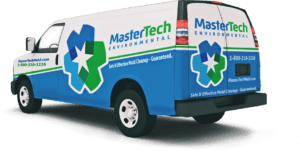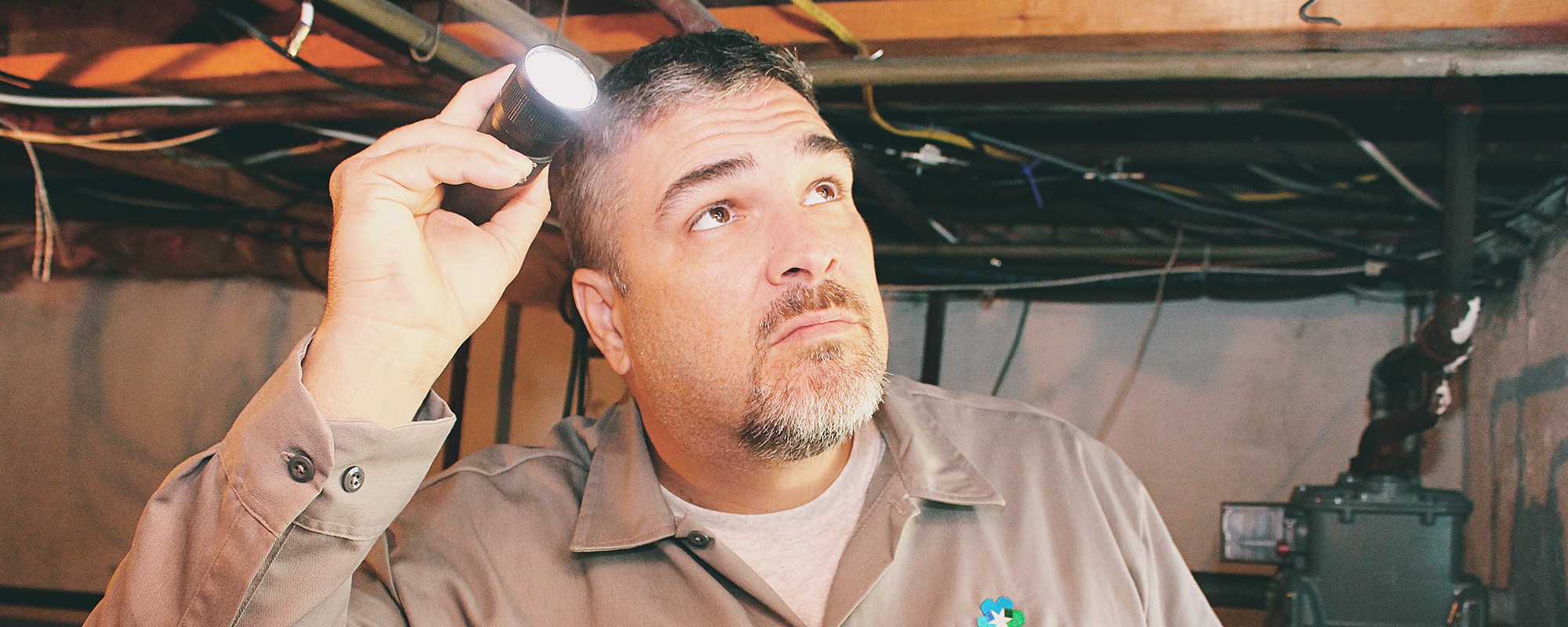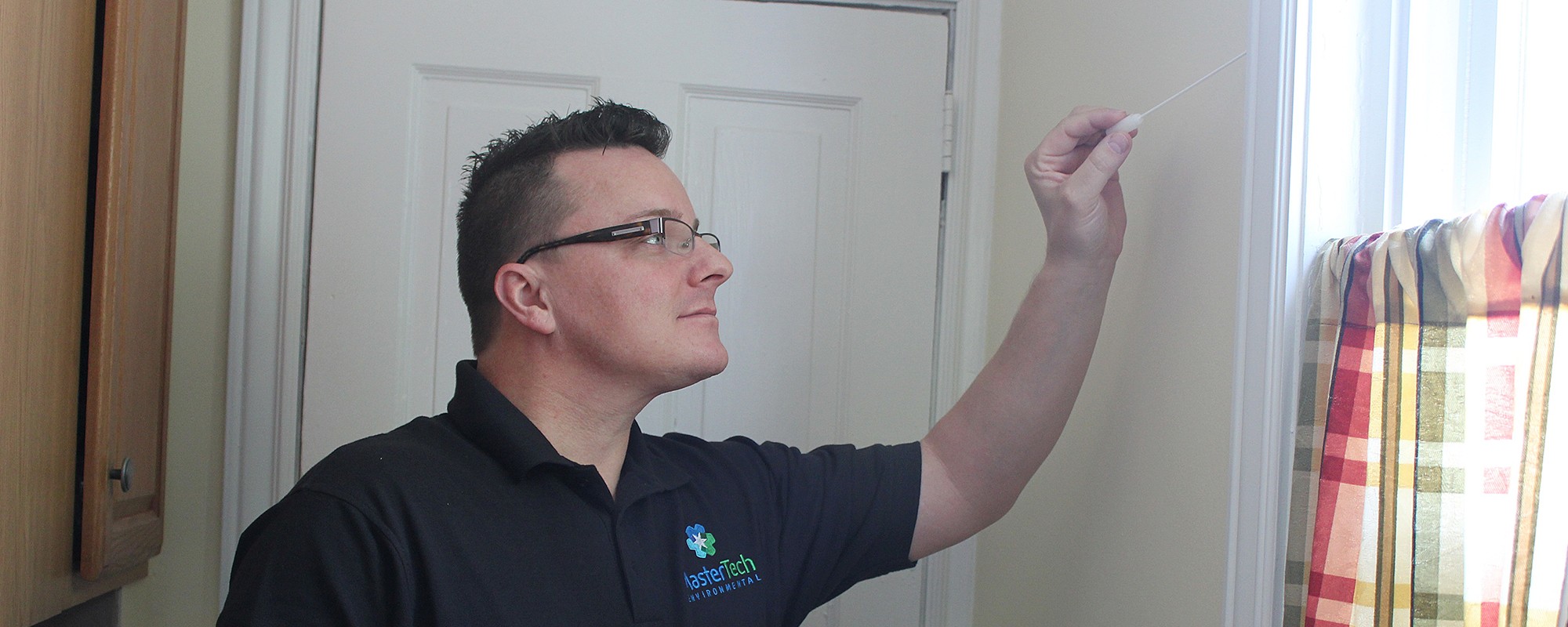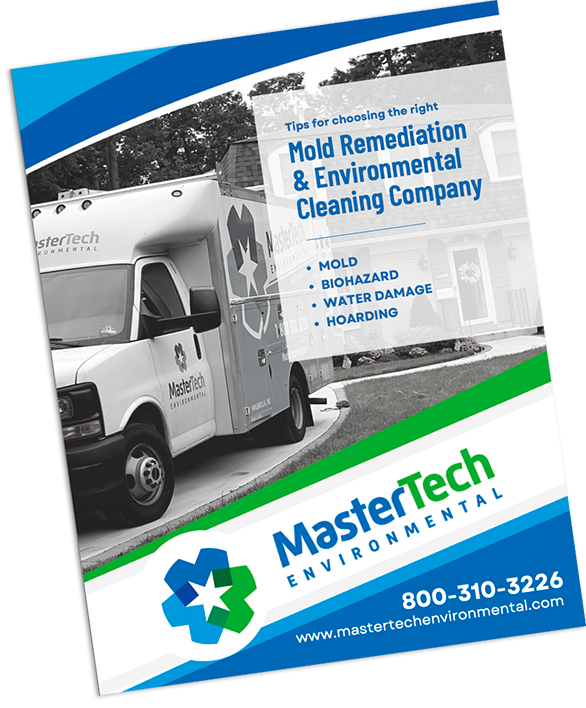Mold growth needs be actively removed in a timely manner, and the moisture source needs to be properly addressed.
Mold problems and moisture issues won’t fix themselves. Actually, unaddressed mold and moisture will only worsen with time and spread to previously clean areas. It is important for South Jersey property owners to conduct regular maintenance checks and pay close attention to the warning signs of an underlying mold problem. Indoor mold development can mean serious property damage in addition to health and safety risks for you and your family.
What Causes Mold in South Jersey Homes and Businesses?
Mold is a natural part of the environment around us. However, when there are elevated levels of mold spores present in your New Jersey home it can lead to serious property damage and put your health at risk.
Mold needs the right combination of elements from its surrounding environment in order to develop and spread. This includes the following:
- Moisture source (i.e: elevated humidity, leaks, flooding, condensation, etc.)
- Food source (i.e.: cellulose-based building materials)
- Warmth (similar to temperatures we find comfortable)
Food and temperature are often out of the NJ homeowner’s control– most homes are constructed with a variety of cellulose-based building materials and temperatures low enough to discourage fungal activity are inhospitable for humans. Regardless of the building type — moisture is the key to controlling and preventing mold growth in South Jersey homes, businesses and public buildings. In the presence of an adequate moisture source, mold spores can germinate and spread in your home. Moisture from indoor humidity, condensation, poor ventilation, leaks, floods and various other water events can spark the start of a mold problem.
Signs of a Possible Mold Problem in New Jersey Properties
Because fugal spores are microscopic and can contaminate virtually any surface — it can be difficult to for property owners to identify a mold problem and the problem can persist for an extended period of time before discovery. Often times, it can be difficult to spot a mold problem right away, even if it is obvious, if the homeowner isn’t paying close enough attention or simply does not know what to look for.
- Visual Signs:
- Mold comes in a variety of colors. Mold can appear black, white, grey, brown or green in color. Please keep in mind that just because it is black in color, does not mean that it is “black mold.” It is also important to understand that ALL types of mold can be potentially harmful to people, not just “black mold”– it really just depends on the individual and particular mold situation.
- Mold can be powdery in texture or appear in small splotches.
- Usually, mold will be accompanied by suspicious staining or discoloration.
- Musty Odors:
- Mold spores can release gasses that may have a pungent, earthy odor that is often described as “musty.”
- Musty odors can permeate through flooring and walls. Where you detect the odors may not necessarily be where the mold is actually growing.
- Mold can easily develop in hidden spaces (in wall voids, under carpet, behind wallpaper, above ceiling tiles, etc.) or unoccupied spaces (attics, basements or crawl spaces). Musty odors can be a sign of hidden mold growth.
- Unexplained Allergies:
- Mold can potentially release mycotoxins that might make some people sick.
- Symptoms can range from very mild to very severe.
- Depending on the individual, symptoms caused by mold can range from mild allergic reactions to severe health complications.
- History of Moisture Issues:
- Signs of water damage can be the first indicator of possible mold development.
- Mold is often the result of a moisture problem. Mold can be caused by issues that are seemingly minor like humidity or condensation, or it can be caused by major water events like leaks or floods.
- Moisture problems should be addressed immediately to avoid severe mold development and additional property damage.
- In the event of a severe water issue like a flood or a major leak— immediate water extraction and structural dry out done by a water damage cleanup profession in NJ may save you from widespread mold damage and expensive property damage.
- Rooms throughout your New Jersey property (including attics, basements and crawl spaces) should be well ventilated with sufficient air circulation to avoid moisture buildup— indoor humid levels should stay below 50%.
Professional Mold Inspection in New Jersey Properties
If you suspect a potential mold problem in your residential home or commercial office building, you should contact a trained and certified NJ mold inspector to get to the bottom of it. A professional mold inspector will have the necessary tools and knowledge to determine if a mold problem exists, how bad it is, what caused it and how to effectively remove it.
Once you confirm a mold problem in your New Jersey home, do not wait. Hire a local mold removal company in South Jersey that can safely and effectively remove the mold and restore a safe environment for you and your family. Be proactive in preventing mold growth in your home with moisture control tactics. In order to spot mold early in its development, take the time to routinely check your home for potential signs of mold growth.






